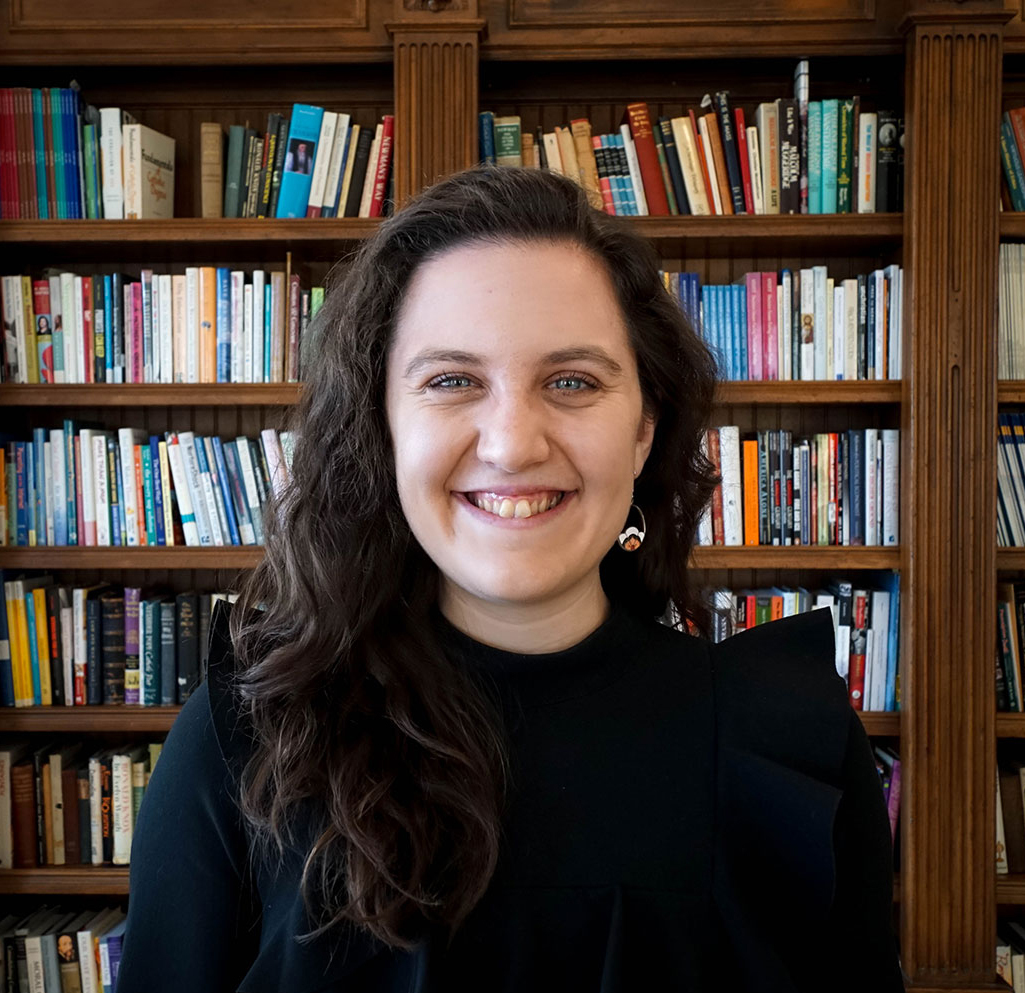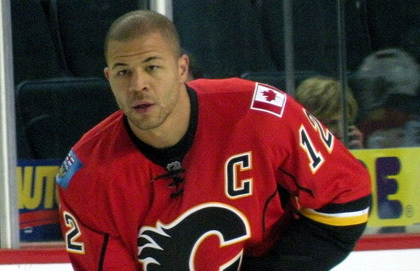Convivium: I'm drawn to your artwork because it reminds me that the Lord comes to each of us indiscriminately in our poverty. The gospel is radical like that, it's distinctive that the Lord comes to us in that place and accompanies us there. Your artwork is arresting; you go to those spaces with your work. Would you share with us a little bit about how you to journey to that place?
TS: I'm a Christian, and have been baptized a Roman Catholic for years. I have been a lover of artwork ever since I was young and I felt there was a disconnect between the spaces of our faith that I saw and the texts that I read in the Bible. I think one of the interesting things is that artwork's become almost the visual ambassadors to our faith. And I say that it's not doing a full job in the sense that I look at my faith and my relationship in terms of price. I feel my religion being 50 per cent comfort and 50 per cent haunting. I'm slapped in the face constantly, always being challenged. And it's interesting because we have two kinds of approaches to our faith. It becomes comforting. "There are no atheists in foxholes."
But then there's also, I believe, that there's also a challenge. And the idea is that, you know, found in Matthew 25 and throughout all the Bible, it's "Love your enemy." I think about that constantly. I think about what that means, and how I should act, and how radical Christianity is. If you want to be perfect, take all of your money and you go give it to the poor and follow me. These are radical things that are oftentimes absent in a visual representation of the faith. And you can go down the list of so much brilliant, very powerful points that are not necessarily represented in the Christian art world. A lot of it is the idea of comfort.
I did this one sculpture called Love Your Enemy, which was Jesus embracing a terrorist. It's interesting because the terrorist is becoming smothered in the embrace. And it seems like all the power is being sucked out of that terrorist. But it was a real interesting exercise for me to do that because, you know, I just think: what does loving your enemy mean? I wanted to see that. I wanted to see the hard-core aspect about what Jesus really means. Seeing it puts a different spin on it in the sense of a new perspective, so to speak. And I find it fascinating to do; so many beautiful passages need to be seen.
One of the great things about a sculpture is it takes up a space and takes attention just because it exists as a three-dimensional object. You can't close it like you can close a book. You can't turn it down like you can a radio. It has a power, just by it existing. And that's a very cool weapon to use for evangelizing… So, I feel as though if I could grab your attention for two minutes, maybe 15 minutes. If I could do that every day while you're walking past a sculpture, then I've done something great. It's interesting because the Matthew 25 series would be a perfect example. It's installed in many different cities around the world. They are strategically placed most times so it's something that a person would run into on their normal daily routine. And I think, “What better, and what more discreet but powerful way, to inspire people to care about their brothers and sisters that are in that community, than by having that sculpture just there?” You can turn away if you want, but it has silent, powerful presence in a community.
C: What kind of impact do you think artwork can have on its audience?
TS: On each piece I create, I kind of come on with the premise that people don't like artwork and that they're bored of artwork; that artwork is invisible to them. And that people have this pre-conceived idea that Christianity is boring and old. So, by going on to the basic premise that most people think artwork is useless and stupid, and that Christianity is for, you know, saintly, older women, I get my fighting instinct up, and I want to conquer visually in a way that will grab people's attention and make people see, really see for the first time. Because a lot of our work is very much invisible to people. And a lot of the more powerful things within our Catholic faith are not seen in our culture today, right?
I have this cynicism about what people think about artwork and Christianity, but I also have a faith that one can do a piece of artwork that can explain and show people how amazing Saint Thomas Aquinas is or how awesome Saint Padre Pio is. I do believe it has the power. You just can't be lazy about it. You can't take things for granted.
C: On your website, you refer to sculptures as being visual prayers. Can you unpack a little more of that? How do you see the role of art within a life of faith?
TS: I was doing Stations of the Cross piece, three or four years ago. I was really getting into doing the first one with just Pilate. How did he look? He had his finger on his nose. I am working on the expression. I’m spending hours and hours… I’m even working on how the setting looked. Then I thought, “Oh my goodness. I'm praying while I'm doing this.” I was totally there with every Station of the Cross, and the suffering and how I represent it. It was a prayer.
You can expand that to see someone collecting sandwiches for the homeless; ask him what he is doing. Well, he’s praying. I think the larger we can bring the idea of prayer, the healthier we will be as spiritual people. I think one of the dangers is to push your religion in such a small confined area, and then everything else not necessarily has anything to do with the sacred. I think we're limiting amazing potential experiences. For instance, when I create pieces, I literally feel like I'm in a state of prayer while I’m doing it… With each piece of clay I put on, I say a prayer. That's a very nice repetitious experience.
But it doesn't have to be that direct and intense, I don’t think, to have a spiritual experience. Likewise, with my sculpture, if someone comes into the Homeless Jesus sculpture or Christ on a Park Bench, I created a space for someone to sit right beside that. I perceive that as a cue. Why not have a space there? What a beautiful spot to be prayerful and to meditate. I've had several people that have come up to me and they said that that seat right there is one of my very spiritual places, where they can put their hand on the feet of Jesus. It's interesting. To create spaces and experiences that aren’t necessarily common, I think, is also good for spirituality too.
C: You also have these large-scale public commission works. I'd like to hear more about what you think the role of art plays within the life of a city?
TS: I think all artwork has to be something that communicates in a language people understand and that part of the idea of an artist is to communicate. That sounds like a very normal idea in today’s world. But it’s very interesting that that is oftentimes not represented in modern-day artwork.
If I am creating a piece of public artwork, I try to give my best performance as if I'm a theatre playwright or a director. I have to know my audience then, too. I have to know how bored people are with artwork and how jaded they are with artwork and how much we're tantalizing the little iPhone as artwork. Likewise, with Christian artwork, if I’m going to tackle a secular subject, I will want to put as much power into as possible. Right?
It helps if I have a great subject matter to do. I find that a lot of the public artwork, a lot of it becomes spiritual in a sense. Like the Cape Briton mining monument that I’m doing, it’s the people that lost their lives in the mine. If you do amazing artwork, if I do amazing secular artwork, it gives another whole audience to the idea of the Christian artwork I do.
I’ve just created a 27-foot bronze sculpture which is going to unveiled in spring, of our obsession with technology, like our iPhones and everything. It’s amazing. It just nails it. When people look at that, they’re going to say, “Well, I wonder what else this artist did.” And then, they will check out my massive work of Christian artwork, and they will say, “Okay. This is something interesting.” It can bring a new audience to my Christian stuff and it can also showcase awesome artwork for the sake of awesome artwork.
C: Most recently, your work Angels Unaware was unveiled in St. Peter's Square. I thought it was so important that four refugees were there with you at the unveiling. It was the first sculpture installed in St. Peter’s Square in over 400 years. What experience do you hope people have when they encounter this particular piece?
TS: Every day I listen to the Bible as I sculpt. For the last four or five years, obsessively. Doing that, wonderful passages really sink in. I remember Hebrews 13 to be welcoming strangers; many of them entertain angels unaware. That was a riddle for me that I had to solve in a sculpture. It took me two years to do it. When I was asked by Michael Cherney to start thinking about an idea of refugees and migrant people, I came back to my Canadian studio and the whole idea unfolded in one second.
I knew exactly how it would look. In the centre was Hebrews 13:2; in the centre of the sculpture, literally, the angel standing. You can only see its wings. Surrounding that are refugees, immigrants from all historical periods. They are all on a raft, sharing the same common raft, the same human experience. It's very discreet, it's very subtly done, I believe, because you can encounter more than a hundred different figures, all with a different expression and different experience about their own traveling, migrant, historical or contemporary situation there. So, to show compassion. But also, to show that we in Canada say we all came from some other place. We all share that. This visually shows it, where I have an African right beside an Irish person right beside a Jew right beside a Muslim. It’s an idea that I think is very powerful.
I think that what it shows, by have the angel wings in the center, is that in a sense we are all sharing those angel wings and that they’re all spiritual. It’s basically, what I would consider, is an excellent translation of being welcoming to strangers and entertain angels unaware, because you never know when that person will be some beautiful spiritual forest in your life. Therefore, all people have that potential. It’s something that all human life has. The idea of the sacred within us all.
Woven within the sculpture is the Holy Family, too. Pope Francis, three years ago, said, “Don’t forget that Joseph, Mary, and Jesus were refugees.” I very discreetly put them shoulder-to-shoulder within the crowd of these other people, showing the blending of the everyday and our faith.
C: What is next for you?
TS: Right now, I am working on a sculpture on the theme of human trafficking. It’s the same size as Angels Unaware, a 20-foot sculpture on human trafficking. It's going to take me about another year to get it finished. It has Saint Bakhita lifting up the ground and having the victims of human trafficking released to their freedom. The title of the sculpture is Let the Oppressed Go Free.
What's interesting is, after I started working on this piece, I was reading up on human trafficking. One of the things suggested was that human trafficking will exist if it’s kept underground. My sculpture is literally the human traffickers coming out from under the ground, being raised by Saint Bakhita. I thought that is the best thing that sculpture can do is take things that are oftentimes underground and bring them and release them to the world.
To see more of Timothy Schmalz's work, please click here.







